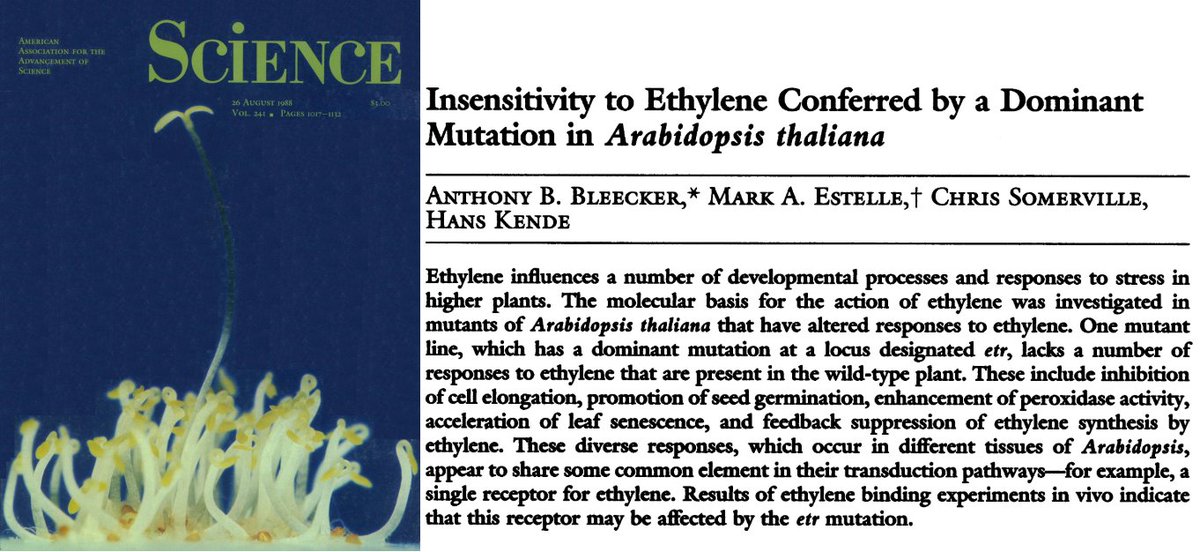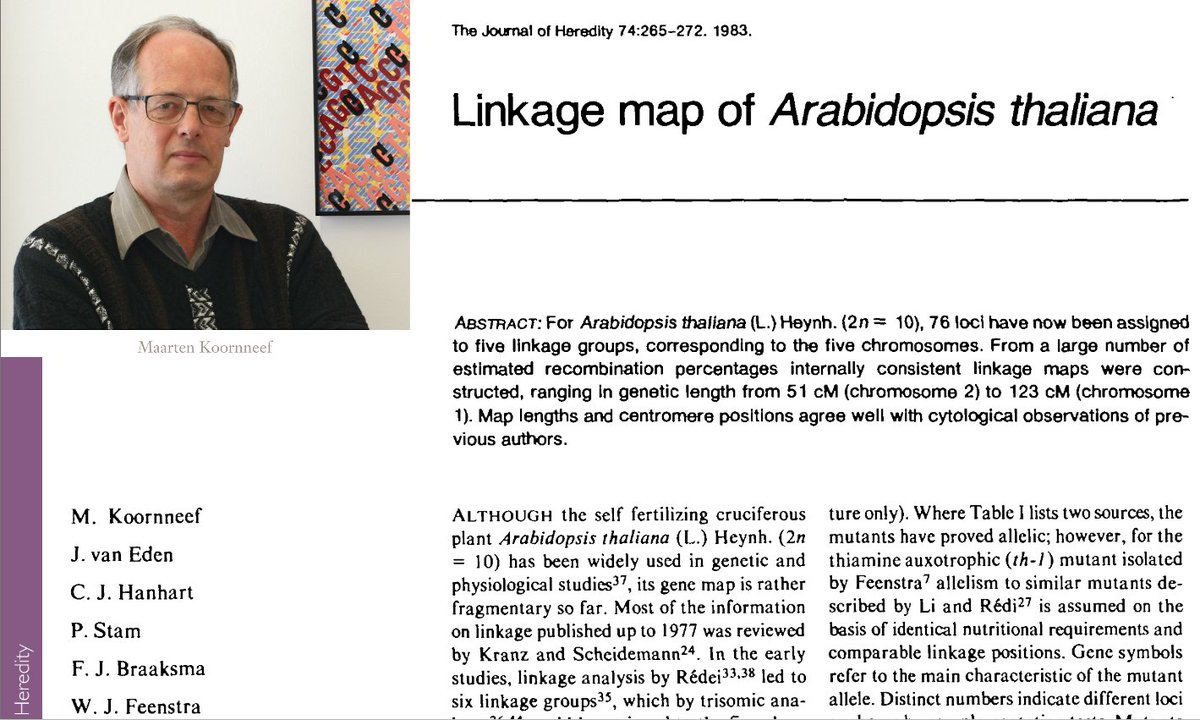#PlantScienceClassics #9: The CaMV 35S promoter. In 1985 Joan T. Odell & Ferenc Nagy from Nam-Hai Chua’s lab describe the Cauliflower mosaic virus 35S promoter @Nature, enabling researchers to ubiquitously expression their genes of interest in plants. doi.org/10.1038/313810… 

The early 1980s were an important time for #PlantMolecularBiology: Among other things, plant transformation had just been established. But when introducing a gene into a plant, it requires regulatory sequences to activate its expression – and none active in plants were known.
In fact, the first transgenic plant published by the lab of Mary-Dell Chilton in 1984 in @CellCellPress had exactly this problem: They had introduced the yeast ADH1 gene without any regulatory sequences, and hence it was not expressed. 



During the race toward the fist transgenic plant the involved labs overcame this problem by inserting their transgenes into the site of the NOS gene on the Agrobacterium Ti-plasmid, thereby indirectly exploiting its endogenous promoter, knowing that this gene is active in plants.
In 1983 Csaba Koncz from the Jeff Schell lab @mpipz_cologne described the NOS & OCS promoters of Agrobacterium in @embojournal as first plant-active promoters-but they aren't active in all tissues & under strong developmental/environmental regulation, leading to high variability. 

This is where the 35S promoter comes in. In 1980 the 8024 bp of the CaMV genome were annotated as 6 ORFs transcribed as only two mRNAs: the short 19S and whole-genome 35S. These were furthermore found to be strongly expressed in plant cells, when the virus infected the plant. 







Because of this discovery, scientists tried to use the CaMVirus to transform plants, but quickly realized that the Virus would only tolerate the insertion of short genes, & due to this and the establishment of Agrobacterium-mediated transformation, this work was abandoned. 

But work on identifying the sequences driving expression of the 35S gene in planta intensified & in 1985 @Nature Odell et al. determined that 46 bp upstream of the 35S gene resulted in minimal expression, while 343 bp led to strong gene expression across all plant tissues tested. 

Hence, the ‘CaMV 35S Promoter’ & ‘Minimal-Promoter’ were defined. In 1987 Kay et al. added that placing 2 35S promoters in a tandem led to even stronger expression,& in 1990 Benfey et al. identified sub-elements within the 343bp responsible for activity in different plant organs.
The 35S promoter (in combination with the establishment of plant transformation (1983)) enabled plant scientists for the first time to express their genes of interest in plants to study their functions – an invaluable tool! And the minimal promoter proved important as well…
It was used to build inducible promoters by combining it with activating elements, e.g. auxin-responsive elements to monitor the plants local auxin concentrations, or in response to external activators, such as alcohol or estrogen, to have full control over a gene’s activity.
If you're interested in more details, or further developments after 1990 around the 35S Promoter, have a look at 'A Short History of the CaMV 35S Promoter' (2018) doi.org/10.7287/peerj.…
• • •
Missing some Tweet in this thread? You can try to
force a refresh




















